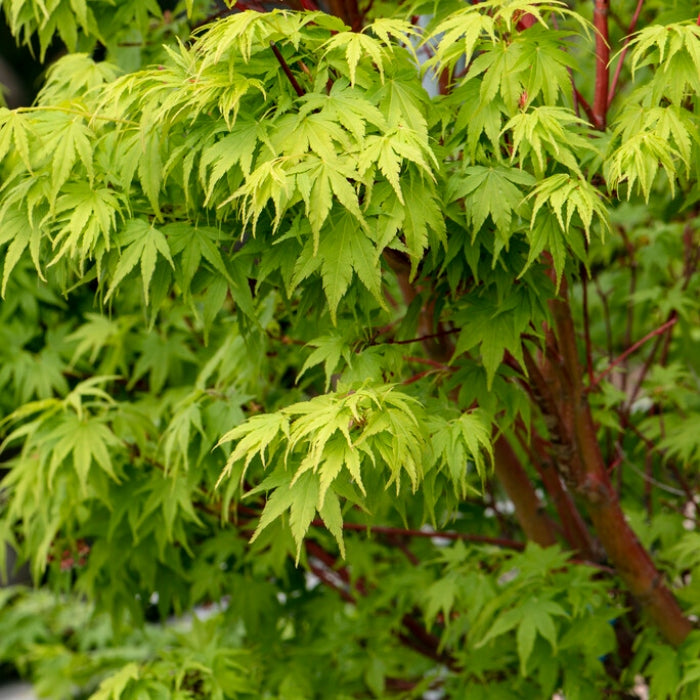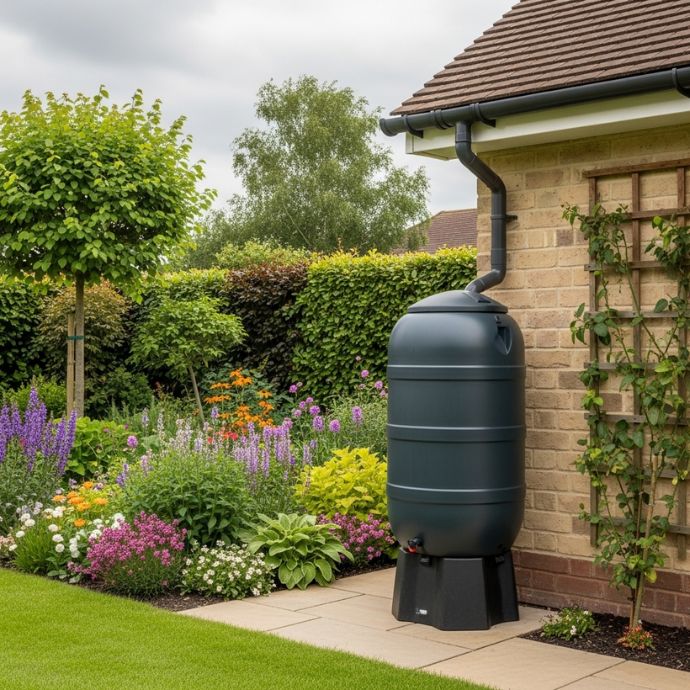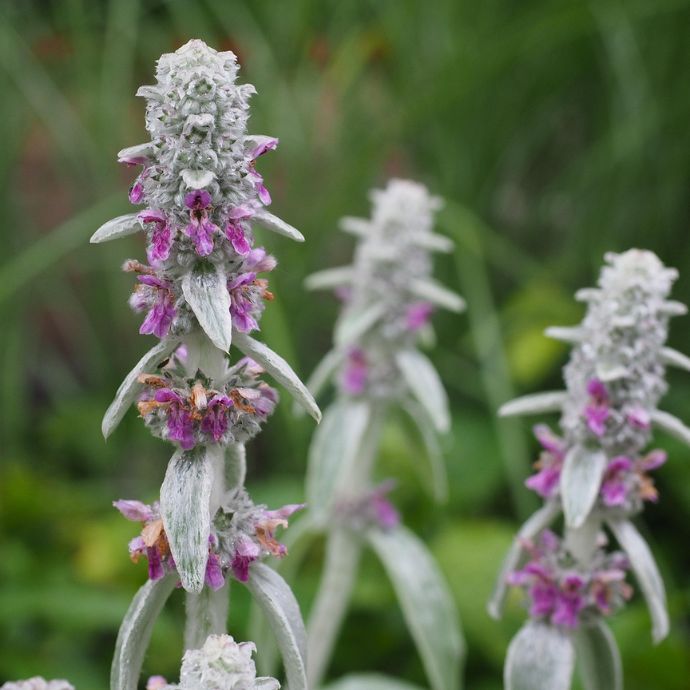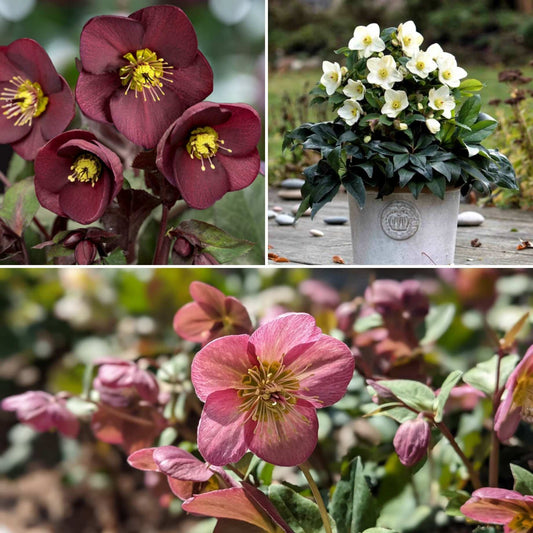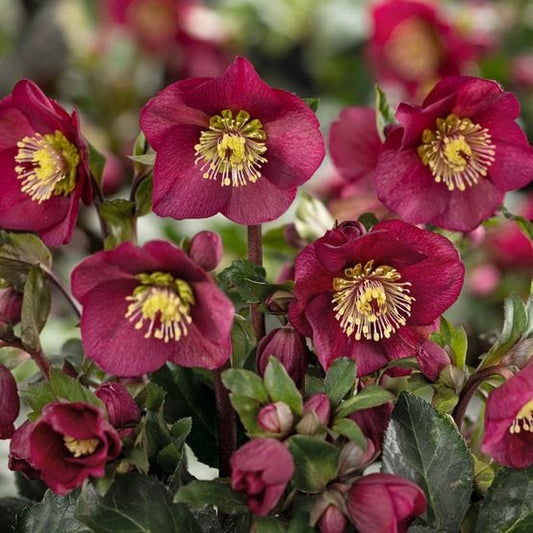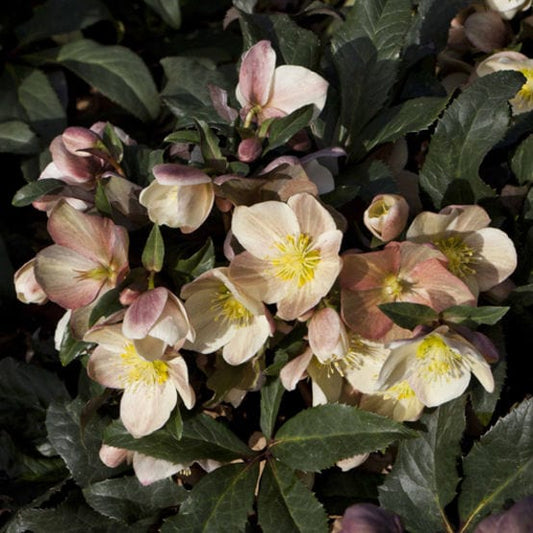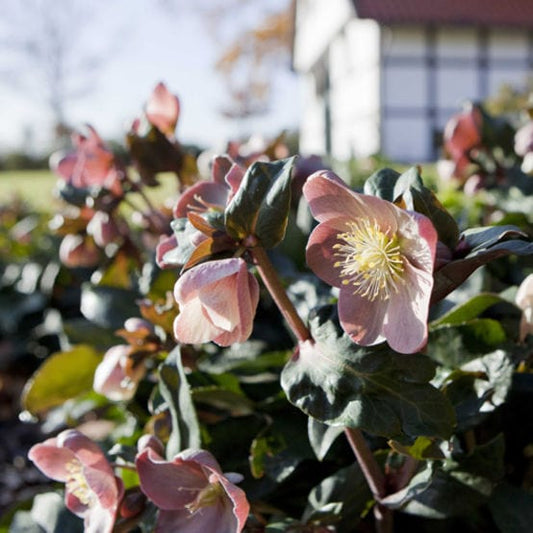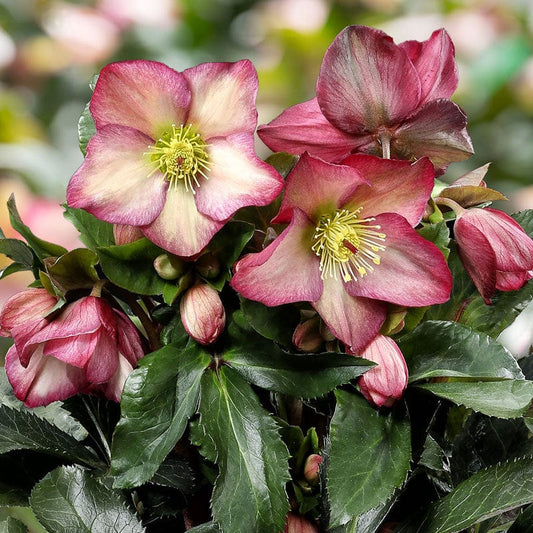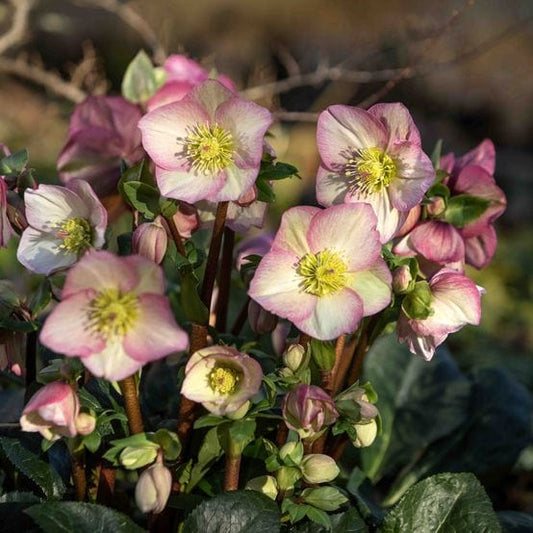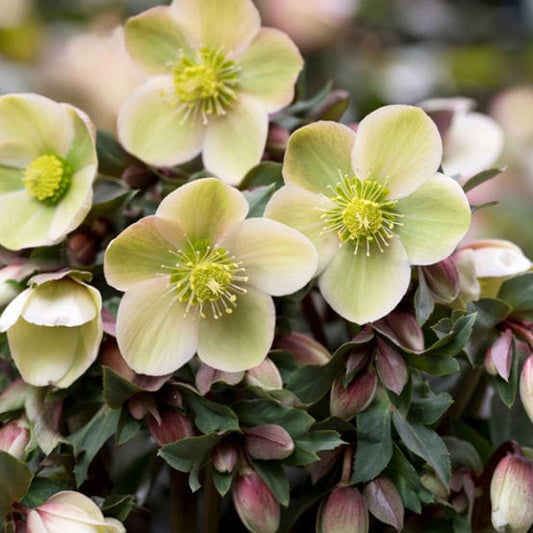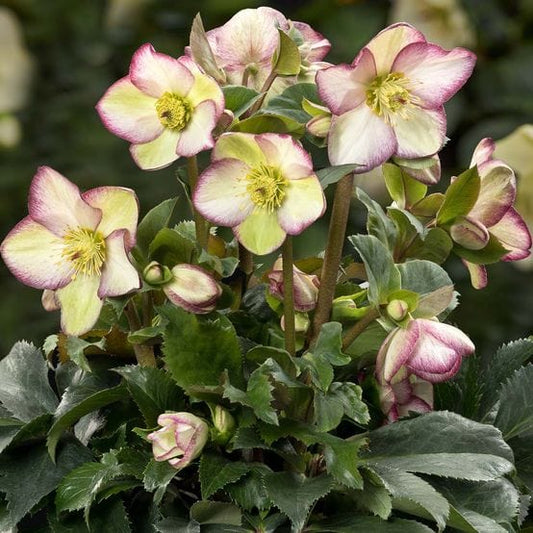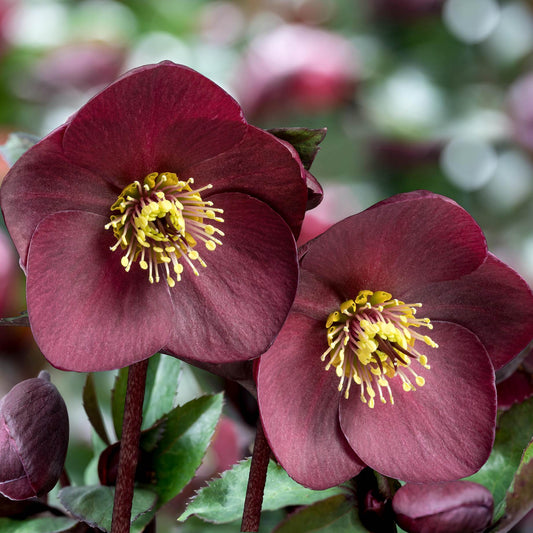Hellebore Care Guide

Few plants are quite so elegant as the humble hellebore. With their nodding, painterly blooms appearing throughout the winter months, hellebores light up the garden in what can otherwise be a bleak and dreary time of year.
Jump to:
- How do you plant hellebores?
- How much do you need to water hellebores?
- Do you need to feed hellebores?
- Do you need to mulch hellebores?
- How do you prune hellebores?
- What do you do with hellebores in summer?
- Can you lift and divide hellebores?
- Hellebore pests and diseases
- Why do hellebore flowers nod downwards?
How do you plant hellebores?
Hellebores should be planted in moist but well-drained soil. If your soil is on the heavy side, consider amending with some organic compost or well-rotted manure. Hellebores can be purchased and planted at any point during the year, however avoid planting them in drought, waterlogged or frozen conditions.
Dig a planting hole as deep and twice as wide as your hellebore, position the plant in the hole’s centre and then backfill with soil. Firm the plant into its place gently with your foot, then give the plant an initial good watering – enough to soak the first few inches of soil.

Do you need to water hellebores?
Like all perennial plants, hellebores need to be watered from time to time in order to stay happy and healthy. Water your plant regularly throughout its first couple of growing seasons, particularly during hot, dry spells.
A general rule of thumb is to water your established hellebore if the top inch (or so) of soil is dry to the touch. Be careful not to overwater as this can lead to root rot.

Do you need to feed hellebores?
Though not heavy feeders, hellebores do benefit from an application of well-rotted compost to keep its nutrient levels topped up. Additionally, if your soil is particularly poor, you can (sparingly) add some slow-release, general fertiliser. Too much fertiliser, however, can lead to the plant’s energy being overly diverted towards foliage, rather than flowering growth.

Do you need to mulch hellebores?
Applying some mulch around the base of your hellebores can help retain moisture and suppress weeds. The application of well-rotted compost mentioned above acts as a kind of mulch. Alternatively, you can opt for something like Strulch (which is a straw-based mulch). An alternative to the method proffered just before is to apply the general-release fertiliser pellets and then add the mulch (whatever you’re using) on top of that.

How do you prune hellebores?
Remove the faded, tattered foliage in late winter or early spring, before new growth kicks off in earnest. Deadhead any blooms as and when they become spent. Make sure you use a pair of clean, sharp secateurs and cut each leaf off at its base.

What should you do with hellebores in summer?
The main thing to watch for with your hellebores during summer is that they don’t dry out in hot, dry conditions. This might mean daily watering during drought conditions. You can also remove any spent flowerheads at this point.

Can you lift and divide hellebores?
Yes, you can lift and divide hellebore plants, especially once the original plant has had a few years to establish itself into a proper clump. Dig up the plant, taking care to avoid the roots at this point.
Once lifted, tease the soil from the roots and give them a quick wash to just to clean off any residual dirt. Then, cut through the roots using a pair of sterile, sharp secateurs, making sure that each plant-let you separate has both roots and a crown.
Take your new plants and place them into their new planting positions. Firm the soil down and give them a quick watering to help avoid transplant shock. Treat these new plants with the same care regimen you would any newly-planted plants. You can also propagate hellebores by seed.
Can you move hellebores?
You can move hellebores, either into several different plants (as mentioned above) or lifting the entire plant and placing it somewhere new. Moving the plant from its established position will shock the plant, so keep an extra careful eye on the plant, particularly in its first few weeks in the new position. Water regularly to help the roots acclimatise to their new spot in the soil.

Are hellebores affected by any pests or diseases?
While generally healthy and robust plants, hellebores, like any other plant, can occasionally experience problems from time to time. The main things to watch for are aphids, leaf spot and leaf miner, all of which can be treated by removing affected plant material.
The only really severe issue, in the sense that it affects whether the plant lives or dies, is the dramatically-titled hellebore black death. If your plant’s growth seems stunted and there are black marks running along the foliage, unfortunately you’ll have to remove the affected plant(s).

Why do hellebore flowers nod downwards?
It’s thought that hellebore flowers nod downwards to protect the pollen within from inclement weather like rain and snow, as well as offering greater shelter and protection to attending pollinating insects like bumblebees, early in the season.
Final thoughts
Among our very favourite plants here at Roots, hellebores put smiles on faces all throughout the winter months. With just a little care and attention, you can ensure season after season of healthy, happy growth, and who doesn’t want that?
Last updated: 21/11/2025
